Do you have a question about the Friedrich WallMaster WS Series and is the answer not in the manual?
Guides on setting the thermostat to optimal temperatures for reduced energy consumption.
Advice on directing louvers and preventing air blockage for efficient operation.
Tips on insulation, caulking, and exterior colors to lower cooling costs.
Recommendations for shading, attic ventilation, and interior sun protection.
Importance of cleaning the air filter for unit performance.
Initial steps to power on the unit and its default settings.
Explanation of Cool, Fan Only, and Money Saver modes.
How to adjust room temperature and fan speed, including Smart Fan.
Instructions for setting the internal clock and programmable timers.
Description of built-in safeguards for the unit's components.
Identifies and explains the purpose of each button on the remote control.
How to start, stop, and change modes using the remote.
Adjusting temperature, fan speed, and timer settings via remote.
Operation of the knob for selecting cooling, heating, and fan-only modes.
How to adjust the temperature setting using the designated knob.
Detailed steps for accessing and cleaning the reusable air filter.
Instructions on how to change the discharge grille orientation.
Information on power supply, circuit protection, and wiring adequacy.
Emphasizes the importance of direct connection and proper grounding.
Steps to perform a safety test on the unit's power cord.
Diagnosis and solutions for the unit failing to cool or start.
Addresses issues related to heating function and unusual odors.
Explains causes of frost and specific heat pump operational details.
Steps for creating the correct wall opening and incorporating lintels.
Details on required spacing and distances for proper sleeve installation.
Step-by-step guide for inserting and aligning the sleeve in the wall.
Instructions for checking the downward tilt and caulking the sleeve perimeter.
Checks to ensure the sleeve is correctly installed, sealed, and sloped.
Procedures for safely removing the chassis and sliding it into the sleeve.
Proper placement of the gasket between chassis and shell for noise and efficiency.
Steps to secure the front panel and intake grille to the chassis.
Instructions for attaching a tube to the basepan drain nipple.
Information on optional drain kits for specific installation needs.
Details on what is covered and for how long (first year, next four years).
Conditions that void the warranty or are not covered.
Procedures for requesting service and contact points.
Instructions for registering the product for warranty benefits.
Fields for owners to record model, serial, and installation details.
Guides on setting the thermostat to optimal temperatures for reduced energy consumption.
Advice on directing louvers and preventing air blockage for efficient operation.
Tips on insulation, caulking, and exterior colors to lower cooling costs.
Recommendations for shading, attic ventilation, and interior sun protection.
Importance of cleaning the air filter for unit performance.
Initial steps to power on the unit and its default settings.
Explanation of Cool, Fan Only, and Money Saver modes.
How to adjust room temperature and fan speed, including Smart Fan.
Instructions for setting the internal clock and programmable timers.
Description of built-in safeguards for the unit's components.
Identifies and explains the purpose of each button on the remote control.
How to start, stop, and change modes using the remote.
Adjusting temperature, fan speed, and timer settings via remote.
Operation of the knob for selecting cooling, heating, and fan-only modes.
How to adjust the temperature setting using the designated knob.
Detailed steps for accessing and cleaning the reusable air filter.
Instructions on how to change the discharge grille orientation.
Information on power supply, circuit protection, and wiring adequacy.
Emphasizes the importance of direct connection and proper grounding.
Steps to perform a safety test on the unit's power cord.
Diagnosis and solutions for the unit failing to cool or start.
Addresses issues related to heating function and unusual odors.
Explains causes of frost and specific heat pump operational details.
Steps for creating the correct wall opening and incorporating lintels.
Details on required spacing and distances for proper sleeve installation.
Step-by-step guide for inserting and aligning the sleeve in the wall.
Instructions for checking the downward tilt and caulking the sleeve perimeter.
Checks to ensure the sleeve is correctly installed, sealed, and sloped.
Procedures for safely removing the chassis and sliding it into the sleeve.
Proper placement of the gasket between chassis and shell for noise and efficiency.
Steps to secure the front panel and intake grille to the chassis.
Instructions for attaching a tube to the basepan drain nipple.
Information on optional drain kits for specific installation needs.
Details on what is covered and for how long (first year, next four years).
Conditions that void the warranty or are not covered.
Procedures for requesting service and contact points.
Instructions for registering the product for warranty benefits.
Fields for owners to record model, serial, and installation details.
| Brand | Friedrich |
|---|---|
| Model | WallMaster WS Series |
| Category | Air Conditioner |
| Language | English |
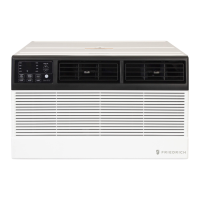
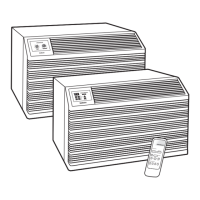
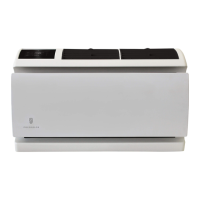
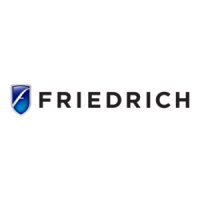


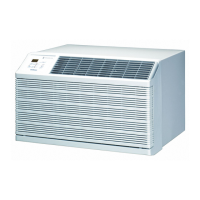
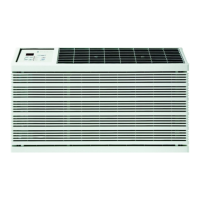
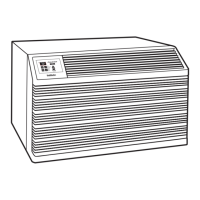

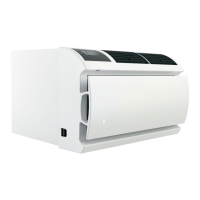
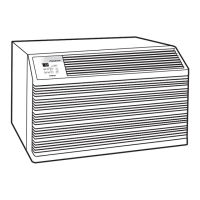
